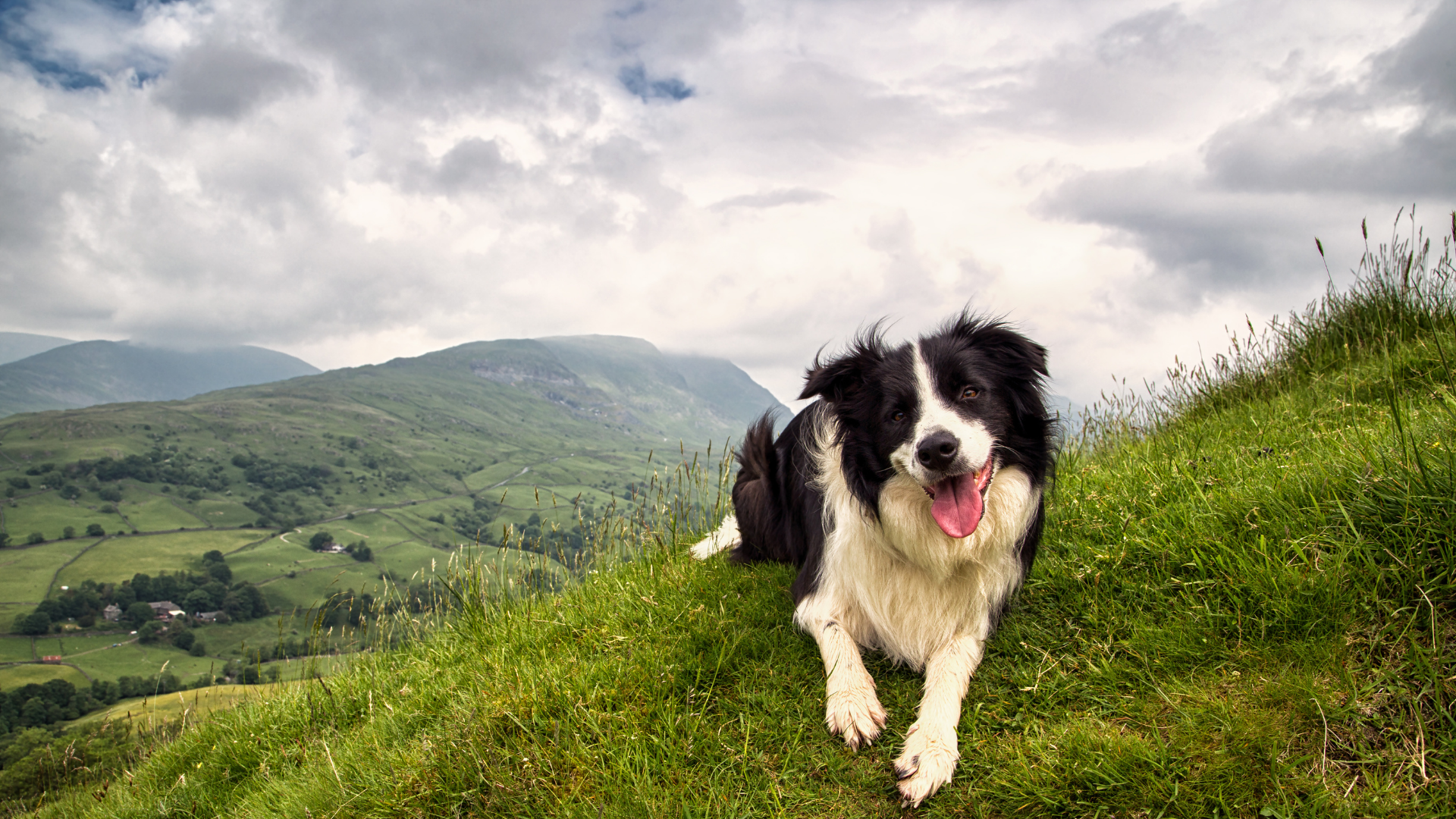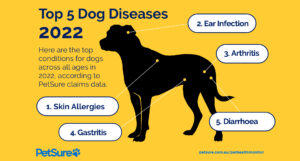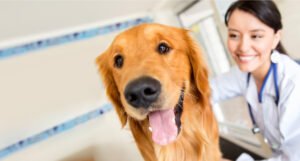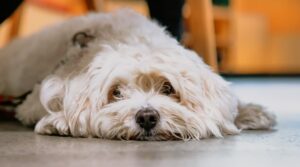Border Collie | Traits | training | Typical health problems
This section outlines Border Collie traits, training and typical health problems.
Border Collie | Breed highlights
| Breed: | Border Collies are medium to large-sized herding dogs. The breed is very at home working on a farm but can adapt to an urban setting. Border Collies are notable for their high energy, intelligence and trainability. |
| Coat type: | Border Collies have a double coat. The topcoat can range from short to long, and rough to smooth. The undercoat is short and dense and functions as a type of waterproof layer. |
| Shedding: | Moderately shedding breed. Heavy shedding (moulting) occurs in Spring and Autumn. |
| Grooming: | Brush Border Collies weekly to keep coats tangle-free. A heavy moulting period will mean more frequent brushing is required. Bathe every few weeks in summer and once every few months in winter. |
| Activity level: | Border Collies are among the most energetic dog breeds and require a lot of exercise. |
| Apartment friendly: | Not recommended |
| Small children: | Border Collies are a herding breed, and this trait can sometimes become a problem around small children (nipping at the heels). Early puppy training will help your Border Collie become the best family dog possible. |
| Other dog friendly: | If socialised correctly, Border Collies can get along with other dogs. However, Border Collies can become aggressive in settings like parks where dogs are unfamiliar. Off-leash in these settings is not recommended. |
What type of breed is a Border Collie?
Border Collies are a herding dog breed known and loved for their bright personalities and boundless energy. Having been bred to work, Border Collies have an almost obsessive drive for activity. Their cleverness is a defining feature; they love nothing better than the chance to use their intelligent minds. The breed makes a great family pet. However, Border Collies need a lot of daily physical exercise like running and walking. As a super-intelligent breed, they also need activity to keep their minds agile and mentally sharp.
History of Border Collie
Border Collies are centuries-old and less formally recognised as sheepdogs. The breed originated from pasturelands between the English and Scottish borders. Part of their namesake is understood to have come from the old Gaelic word “collie”, meaning “anything useful”. Border Collies of today, much like their predecessors, are revered for their strength, agility, and innate intelligence. Some historians claim Border Collies earned formal recognition after catching the attention of the English gentry during the late 1800s. While the breed remains a working dog to this day and can be found working on farms rounding up sheep or other grazing livestock, their superior minds see them frequently earn accolades in dog show trials, or they may work as service dogs.
Border Collie appearance and characteristics
Border Collies are a medium to large-sized breed. They range in height from 46 to 56 centimetres and weigh between 17 to 20 kilograms. Female Border Collies are smaller than males.
Coat colours for Border Collies can range from black and white, red and white, blue and white, black and grey, all black and a tri-colour mix. Additionally, they are a double-coated breed. Their topcoat can be short or long and may be rough or smooth. A rough-coated Border Collie has a long, straight, coarse coat, while those with a smooth coat have shorter and softer fur. The undercoat for this breed is short and dense and functions as a type of waterproof layer.
Border Collie personality and temperament
Border Collies are generally considered energetic, affectionate and eager to please. The key to keeping a Border Collie content is ensuring they can use their minds in problem-solving and burn off their physical energy.
Border Collies – perhaps more than other breeds – are pack-driven. Their security is derived from being with their group, whether with other dogs when working on the land or with their owners. For this reason, leaving a Border Collie alone for hours, even with space to roam, can be a problem. If boredom or loneliness sets in, this can manifest in destructive behaviour or show as physical or psychological issues.
Border Collie traits
Border Collies have an innate intelligence that flourishes with the right type of training. Training is essential for several reasons: it helps owners gain more handling experience, increases the dog’s confidence, and allows it to expend some of its mental energy.
Naturally driven to herd, Border Collies may attempt to round up whatever is in their path. Unfortunately, this drive to gather can extend to small children, other animals or even cars. Therefore, training for this breed is essential. With proper techniques, Border Collies can learn commands to stop this behaviour and prevent it from becoming problematic.
Border Collie Lifespan
Border Collies live between 10 to 14 years.
The dos and don’ts of caring for a Border Collie
Do: Brush at least once a week to remove excess fur and any debris that can get caught in longer feathered fur (on the tail, stomach and legs). Border Collies go into heavy moults to prepare for the upcoming seasonal changes (summer and winter). During these periods, you may need to brush several times a week to keep shedding under control.
Don’t: Border Collies do not need frequent bathing as overbathing can irritate the skin. Only bathe every few months or if your dog has become dirty after an outdoor adventure. Note: the breed’s double coat can be harder to dry when completely soaked through.
Do: Perform regular nail checks and cut when required. A trim is needed if you can hear your dog’s nails against the floor. PetSure’s Masterclass Video shows you the right way to master the technique. Also, make regular ear checks part of a grooming routine. Ear checks will allow you to spot problems like ticks, ear mites or an infection. Watch Petsure’s Masterclass to learn a vet-approved method to clean your dog’s ears.
Common conditions for Border Collie
| Conditions | Symptoms can include~ | Highest cost for a single treatment* |
| Skin Conditions including – infections and allergic skin disorder | · Scratching, biting or rubbing the skin · Signs of irritation including red skin, scabs, bleeding, pustules or weeping · Hair loss, flaky skin, texture changes, lumps or an unusual or unpleasant smell | $3,760 |
| Gastrointestinal (tummy) problems | · Diarrhoea, vomiting or constipation. · Blood or mucous in stool/vomit. · Increased frequency/urgency passing stool. · Weight loss. · Loss of appetite and interest in food. · May seem more tired than usual. | $8,696 |
| Ear Conditions | · Scratching, rubbing, or pawing at one of both ears. · Head shaking · Odour or discharge from the ears · Ears may be red or warm to the touch | $6,676 |
| Arthritis | · Limping on an affected limb/s · Stiffness on rising · Reluctance to jump or head up and down stairs · Swelling on pet’s legs | $5,903 |
| Traumatic Accidents including bite injuries, wounds, and broken bones | · History of trauma. · Wounds, scratches, pus, bleeding, swelling, heat, pain. · Limping, changes to movement. · Behaviour changes. · Broken claws. · Pain/tenderness. | $32,203 |
Disclaimer: Reimbursement for these claims would be subject to limits, such as annual benefit limits or sub-limits, benefit percentage, applicable waiting periods and any applicable excess. Cover is subject to the policy terms and conditions. You should consider the relevant Product Disclosure Statement or policy wording available from the relevant provider.
* Please note that the values calculated are based on all claims for that condition and medically related conditions in each calendar year.
Types of pet insurance from PetSure
| Policy type | Policy description |
| Accidents | This product provides cover for specified accidental injuries up to an annual policy limit. Most policies will reimburse a stated Benefit Percentage that is typically 80% of eligible vet bills. Some condition sub-limits may also apply, with all annual limits resetting each year when the policy is renewed. It’s important to know that only defined accidents as listed in the policy’s Product Disclosure Statement will be covered (other conditions will not be covered). More information on what is typically covered and not covered in our find a policy page. |
| Basic care | This product provides limited cover for both specified accidental injuries and illness conditions, with a stated Benefit Percentage that can range from 60-90%. Treatments and medications for eligible conditions are typically covered subject to the applicable policy limits. Claimable conditions have an annual condition limit , meaning once the condition limit (subject to the annual benefit limit) has been reached in an annual policy period, costs relating to that condition will need to be covered entirely by the policyholder. However, annual benefit limits and applicable annual condition limits reset on renewal each year. More information on what is typically covered and not covered in our find a policy page. |
| Comprehensive / Accident and Illness | This product provides comprehensive cover for both specified accidental injuries and illness conditions, with a stated Benefit Percentage that will typically range from 70-85%. You can claim up to an annual maximum limit each year, which resets on renewal. Sub-limits for certain items may also apply. More information on what is typically covered and not covered in our find a policy page. |
Insurance products are issued by The Hollard Insurance Company Pty Ltd ABN 78 090 584 473, AFSL 241436 (Hollard) and/or PetSure (Australia) Pty Ltd ABN 95 075 949 923, AFSL 420183 (PetSure) (from 8 May 2023 only), administered by PetSure and promoted and distributed through their authorised representatives and distribution partners.
Any advice provided is general only and does not take into account your individual objectives, financial situation or needs. Cover is subject to the policy terms and conditions. Please consider the Product Disclosure Statement (PDS) to ensure this product meets your needs before purchasing, or choosing to continue with the product. PDS and Target Market Determination available on our partners’ websites. Meet our partners at petsure.com.au/partners.
Pet insurance can help by covering a portion of the eligible vet bill if the unexpected happens. Because it is difficult to predict the costs of veterinary care, it can help to have measures in place to help prepare for the unexpected. Check out our partner network and explore our policy tools to find a pet insurance policy.
Not all conditions or items are covered by Pet Insurance. Refer to the applicable Product Disclosure Statement for information about coverage and exclusions.
Frequently Asked Questions
Generally, Border Collies are a healthy breed and experience few health problems. However, due to their active natures, Borders can be prone to joint diseases such as arthritis. Dogs suffering from arthritis may show signs of lameness and an aversion to exercise due to pain.
Accidents and fractures caused by exercise and play are also common. In addition, hip or elbow problems, epilepsy, and deafness may also afflict the breed.
Border Collies need, on average, 90 minutes a day of vigorous exercise. The best approach to exercise is to create a routine that includes a mix of walking, running and structured play such as games of fetch.
References
References
https://dogsaustralia.org.au/members/breeds/breed-standards/Border-Collie
https://en.wikipedia.org/wiki/Border_Collie
https://www.dogsnsw.org.au/Breeds/browse-all-breeds/133/Border-Collie/
https://www.australiandoglover.com/2015/09/border-collie.html
http://www.bccnsw.com/breed-information.asp
https://www.hillspet.com.au/dog-care/dog-breeds/border-collie
https://perfectpets.com.au/pets/dogs/dog-breeds/dog-breeders/border-collie
Pet insurance can help by covering a portion of the eligible vet bill if the unexpected happens. Because it is difficult to predict the costs of veterinary care, it can help to have measures in place to help prepare for the unexpected. Check out our partner network and explore our policy tools to find a pet insurance policy.
Not all conditions or items are covered by Pet Insurance. Refer to the applicable Product Disclosure Statement for information about coverage and exclusions.



 Fact checked
Fact checked





